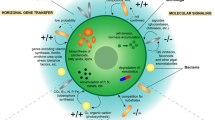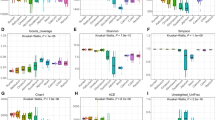Abstract
Panax notoginseng has long been used as a Chinese herb with high medicinal value. The endophytic bacteria in this medicinal plant have multiple biological functions. High-throughput sequencing is a rapidly evolving technique that helps profile the endophytic bacterial community structure of medicinal plants. However, few studies on the endophytic bacteria in P. notoginseng, particularly in dry P. notoginseng roots as a raw medicinal material, have been conducted. In this study, fresh P. notoginseng and dry P. notoginseng were analysed using high-throughput sequencing on an Illumina MiSeq platform to explore the diversity and functions of the endophytic bacteria in different parts of P. notoginseng. The results showed that a total of 201 operational taxonomic units were obtained from fresh P. notoginseng and dry P. notoginseng. The dominant phyla in the fresh and dry P. notoginseng were Proteobacteria (85.9%) and Firmicutes (99.9%), respectively, whereas the dominant genera in these samples were Enterobacter (84.4%) and Bacillus (99.6%), respectively. Fresh P. notoginseng exhibited a higher degree of endophytic bacterial diversity than dry P. notoginseng, but functional prediction of metabolism indicated that the relative abundance of the metabolic function of terpenoids and polyketides synthesis in the dry sample was higher than that in the fresh sample. Our study indicates significant differences in the diversity and metabolic function of the endophytic bacteria between fresh and dry P. notoginseng, providing useful information for the exploitation and utilization of endophytic bacteria resources from P. notoginseng.



Similar content being viewed by others
References
Sun WM, Ma YN, Yin YJ, Chen CJ, Xu FR, Dong X, Cheng YX (2018) Effects of essential oils from Zingiberaceae plants on root-rot disease of Panax notoginseng. Molecules 23:1021
Hao DC, Xiao PG (2017) Rhizosphere microbiota and microbiome of medicinal plants: from molecular biology to omics approaches. Chin Herbal Med 9:199–217
Christensen LP (2009) Ginsenosides chemistry, biosynthesis, analysis, and potential health effects. Adv Food Nutr Res 55:1–99
Rodriguez R, Redman R (2008) More than 400 million years of evolution and some plants still can't make it on their own: Plant stress tolerance via fungal symbiosis (Conference Paper). J Exp Bot 59:1109–1114
Santoyo G, Moreno-Hagelsieb G, Orozco-Mosqueda MDC (2016) Plant growth-promoting bacterial endophytes. Microbiol Res 183:92–99
Strobel G, Daisy B (2003) Bioprospecting for microbial endophytes and their natural products. Microbiol Mol Biol Rev Mmbr 67:491
Boonsnongcheep P, Prathanturarug S, Takahashi Y, Matsumoto A (2016) Rhizobium puerariae sp. nov., an endophytic bacterium from the root nodules of the medicinal plant Pueraria candollei var. candollei. Int J Syst Evol Micr 66:1236–1241
Xie JXJ, Wu YWY, Zhang TZT, Zhang MZM, Zhu WZW, Gullen EGEA, Wang ZWZ, Cheng YCY, Zhang YZY (2017) New and bioactive natural products from an endophyte of Panax notoginseng. Rsc Adv 7:38100–38109
Zang Y, Guo N, Jiao J, Wang X, Gai Q, Xu W, Fu Y (2017) Application of magnetically immobilized edible fungus for the biotransformation of panax notoginseng saponin Rb1 to Rd and Rg3. J Chromatogr B Analyt Technol Biomed Life Sci 1061–1062:306–313
Akter S, Huq MA (2018) Biological synthesis of ginsenoside Rd using Paenibacillus horti sp. nov isolated from vegetable garden. Curr Microbiol 75:1566–1573
Ning L, Zhan J, Guiqin QU, Zhong L, Guo H, Kaishun BI, Guo D (2003) Biotransformation of triptolide by Cunninghamella blakesleana. Tetrahedron 59:4209–4213
Hong CE, Kim JU, Lee JW, Bang KH, Jo IH (2019) Metagenomic analysis of bacterial endophyte community structure and functions in Panax ginseng at different ages. 3 Biotech 9:300
Wei RWR, Qiu DQD, Wilson IWIW, Zhao HZH, Lu SLS, Miao JMJ, Feng SFS, Bai LBL, Wu QWQ, Tu DTD (2015) Identification of novel and conserved microRNAs in Panax notoginseng roots by high-throughput sequencing. Bmc Genomics 16:1–10
Wei X, Wang X, Cao P, Gao Z, Chen AJ, Han J (2020) Microbial community changes in the rhizosphere soil of healthy and rusty Panax ginseng and discovery of pivotal fungal genera associated with rusty roots. Biomed Res Int. https://doi.org/10.1155/2020/8018525
Liu XLX, Qiu ZQZ, Wang LWL, Chen YCY (2011) Quality evaluation of Panax notoginseng extract dried by different drying methods. Food Bioprod Process 89:10–14
Collado J, Platas G, Gonzalez I, Pelaez F (1999) Geographical and seasonal influences on the distribution of fungal endophytes in quercus ilex. New Phytol 144:525–532
Zega A, Suryanto D et al (2018) An ability of endophytic bacteria from nutgrass (cyperus rotundus) from lafau beach of north nias in producing indole acetic acid and in solubilizing phosphate. IOP Conf Ser Earth Environ Sci 130:12007
Jiang Y, Ogunade IM, Qi S, Hackmann TJ, Staples CR, Adesogan AT (2017) Effects of the dose and viability of Saccharomyces cerevisiae. 1. Diversity of ruminal microbes as analyzed by Illumina MiSeq sequencing and quantitative PCR. J Dairy Sci 100:325–342
Tanja M, Salzberg SL (2011) FLASH: fast length adjustment of short reads to improve genome assemblies. Bioinformatics 27:2957–2963
Edgar RC (2010) Search and clustering orders of magnitude faster than BLAST. Bioinformatics 26:2460–2461
Heck L (1975) Explicit calculation of the rarefaction diversity measurement and the determination of sufficient sample size. Ecology 56:1459–1461
Mysara M, Vandamme P, Props R, Kerckhof FM, Leys N, Boon N, Raes J, Monsieurs P (2017) Reconciliation between operational taxonomic units and species boundaries. Fems Microbiol Ecol. https://doi.org/10.1093/femsec/fix029
Gao W, Zheng C, Lei Y, Kuang W (2019) Analysis of bacterial communities in white clover seeds via high-throughput sequencing of 16S rRNA gene. Curr Microbiol 76:187–193
Liu S, Li D, Cui X, Chen L, Nian H (2017) Community analysis of endophytic bacteria from the seeds of the medicinal plant Panax notoginseng. J Agr Sci-Cambridge 9:37
Fu Y, Yin ZH, Yin CY (2017) Biotransformation of ginsenoside Rb1 to ginsenoside Rg3 by endophytic bacterium Burkholderia sp. GE 17–7 isolated from Panax ginseng. J Appl Microbiol 122:1579–1585
Wanxiu XU, Jing LI, Song F, Zhenfeng LI, Zhang Z (2014) Research progress of the drying technology of chinese herbal medicine. Med Plant 5:8–11
Acknowledgements
This research was financially supported by the Henan Provincial Department of Education Fund (19A180031)
Author information
Authors and Affiliations
Corresponding author
Ethics declarations
Conflict of interest
The authors declared that they have no conflict of interest.
Additional information
Publisher's Note
Springer Nature remains neutral with regard to jurisdictional claims in published maps and institutional affiliations.
Electronic supplementary material
Below is the link to the electronic supplementary material.
Rights and permissions
About this article
Cite this article
Zhang, C., Ma, X., Zhu, R. et al. Analysis of the Endophytic Bacteria Community Structure and Function of Panax notoginseng Based on High-Throughput Sequencing. Curr Microbiol 77, 2745–2750 (2020). https://doi.org/10.1007/s00284-020-02068-2
Received:
Accepted:
Published:
Issue Date:
DOI: https://doi.org/10.1007/s00284-020-02068-2




